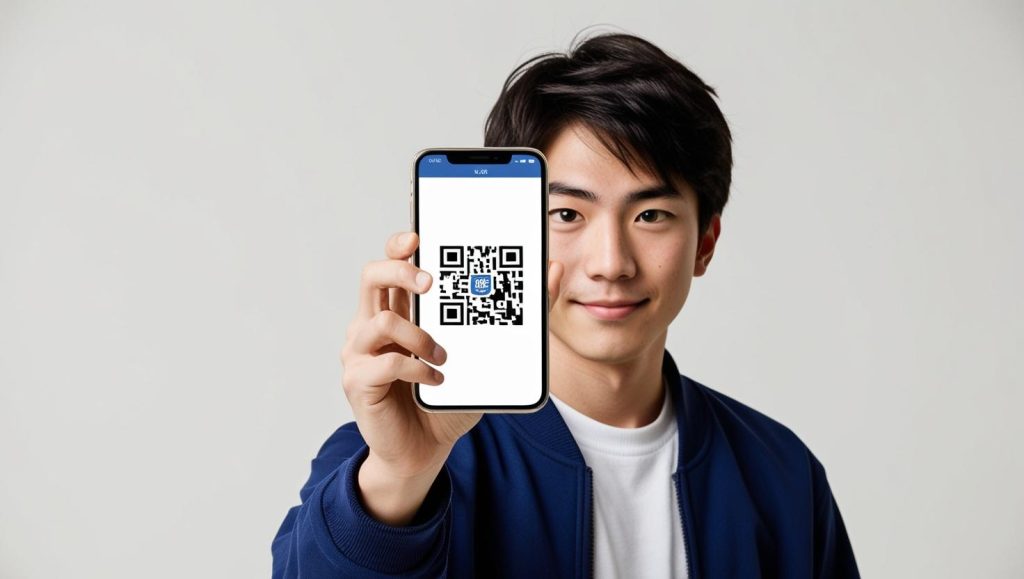Kapasitas kemitraan perlu ditingkatkan melalui keterlibatan setiap individu maupun kelompok yang akan menjadi penggerak perubahan pada pembangunan berkelanjutan sebagai sarana dalam mencapai seluruh tujuan dan target SDGs. Di dunia yang semakin digital, kode QR telah muncul sebagai alat yang serbaguna dan efisien untuk mengakses informasi, memungkinkan interaksi yang lancar, dan meningkatkan pengalaman pengguna. Oleh karena itu, Program Pengabdian Masyarakat mengenai penggunaan kode QR dalam evaluasi bahasa Jepang diadakan di SMA Negeri 15 Bekasi, Indonesia.
Mengenai Program Pengabdian Masyarakat
Program Pengabdian Masyarakat merupakan wujud nyata dari tanggung jawab sosial perguruan tinggi terhadap masyarakat luas. Melalui program ini, ilmu pengetahuan, teknologi, dan keahlian yang dimiliki oleh akademisi diimplementasikan secara langsung untuk mengatasi berbagai permasalahan dan meningkatkan kualitas hidup masyarakat.
Program Pengabdian Masyarakat dapat beragam bentuknya, mulai dari penyuluhan, pelatihan, pendampingan, hingga pembangunan infrastruktur skala kecil, yang semuanya dirancang untuk memberdayakan masyarakat agar lebih mandiri dan sejahtera. Pelaksanaan Program Pengabdian Masyarakat tidak hanya memberikan manfaat signifikan bagi masyarakat yang menjadi sasaran, tetapi juga bagi pihak penyelenggara.
Bagi perguruan tinggi, Program Pengabdian Masyarakat memperkuat relevansi pendidikan dan penelitian dengan kebutuhan nyata di lapangan, sekaligus meningkatkan citra institusi di mata publik. Bagi mahasiswa dan staf, keterlibatan dalam Program Pengabdian Masyarakat memberikan pengalaman berharga dalam menerapkan ilmu pengetahuan, mengembangkan keterampilan sosial, dan menumbuhkan rasa empati serta kepedulian terhadap sesama. Dengan demikian, Program Pengabdian Masyarakat menjadi jembatan penting antara dunia akademis dan masyarakat, menciptakan sinergi positif untuk pembangunan yang berkelanjutan.
Mengenai Kode QR
Kode QR (Quick Response Code) telah menjadi teknologi yang sangat umum digunakan dalam kehidupan sehari-hari. Kemudahan akses dan kemampuannya menyimpan informasi dalam jumlah yang signifikan membuatnya sangat potensial untuk dimanfaatkan dalam berbagai bidang, termasuk pendidikan. Dalam konteks pembelajaran bahasa Jepang, kode QR menawarkan solusi inovatif dan efisien dalam pembuatan instrumen evaluasi.
Instrumen evaluasi memiliki peranan yang sangat penting dalam pembelajaran bahasa Jepang. Dengan adanya kode QR, diharapkan dapat berkolaborasi dalam berbagai instrumen evaluasi pembelajaran dalam bahasa Jepang karena hal ini merupakan suatu peluang dan tantangan dalam menghadapi revolusi industri 4.0. Artikel ini akan membahas secara detail pemanfaatan kode QR dalam menciptakan instrumen evaluasi bahasa Jepang yang interaktif, efektif, dan fleksibel.

Keunggulan Kode QR dalam Evaluasi Bahasa Jepang
Dibandingkan dengan metode evaluasi konvensional seperti tes tertulis berbasis kertas, kode QR menawarkan beberapa keunggulan yang signifikan:
Aksesibilitas yang Mudah: Siswa hanya perlu memindai kode QR menggunakan smartphone mereka untuk mengakses materi evaluasi. Ini menghilangkan kesulitan dalam distribusi dan pengumpulan kertas ujian, terutama dalam kelas berjumlah besar atau pembelajaran jarak jauh.
Interaktivitas yang Tinggi: Kode QR dapat menghubungkan ke berbagai jenis materi evaluasi interaktif, seperti kuis online, latihan berbicara dengan perekaman suara, video penjelasan tata bahasa, atau bahkan simulasi percakapan. Hal ini membuat proses evaluasi lebih menarik dan engaging bagi siswa.
Kemampuan Penyesuaian yang Fleksibel: Instrumen evaluasi yang dibuat dengan kode QR dapat dengan mudah disesuaikan dan diperbarui. Guru dapat dengan cepat mengubah soal, menambahkan materi baru, atau mengubah format evaluasi sesuai kebutuhan.
Penggunaan Sumber Daya yang Efisien: Penggunaan kode QR mengurangi penggunaan kertas secara signifikan, berkontribusi pada upaya pelestarian lingkungan. Selain itu, proses koreksi dan pengolahan data evaluasi juga dapat dilakukan secara lebih efisien melalui sistem online.
Umpan Balik yang Cepat: Beberapa platform online yang terhubung dengan kode QR menawarkan fitur umpan balik instan, sehingga siswa dapat langsung mengetahui hasil evaluasi mereka. Hal ini memungkinkan proses pembelajaran yang lebih efektif dan cepat.
Penerapan Kode QR dalam Berbagai Jenis Instrumen Evaluasi
Kode QR dapat diterapkan dalam berbagai jenis instrumen evaluasi bahasa Jepang, termasuk:
Tes Pilihan Ganda (Multiple Choice): Kode QR dapat menghubungkan ke kuis online berbasis pilihan ganda. Siswa dapat menjawab soal melalui smartphone mereka dan sistem akan secara otomatis mengoreksi jawaban dan memberikan skor. Guru dapat membuat berbagai variasi soal sesuai tingkatan kemampuan siswa.
Tes Isian (Fill in the Blanks): Kode QR dapat mengarahkan ke latihan isian yang meminta siswa untuk melengkapi kalimat atau paragraf dengan kosakata atau tata bahasa yang tepat. Sistem dapat memeriksa jawaban berdasarkan pola dan kosakata yang telah ditentukan.
Tes Penulisan (Essay): Meskipun tidak memungkinkan koreksi otomatis, kode QR dapat digunakan untuk mengakses panduan penulisan esai, contoh esai, atau rubric penilaian. Hal ini membantu siswa memahami kriteria penilaian dan meningkatkan kualitas esainya.
Tes Mendengarkan (Listening): Kode QR dapat menghubungkan ke rekaman audio atau video yang berisi materi mendengarkan. Soal-soal mendengarkan dapat disajikan dalam format pilihan ganda, isian, atau esai.
Tes Berbicara (Speaking): Kode QR dapat mengarahkan ke platform perekaman suara online. Siswa dapat merekam jawaban mereka untuk soal-soal berbicara, dan guru dapat mendengarkan dan menilai rekaman tersebut. Platform ini bahkan dapat menyediakan fitur transkripsi otomatis untuk mempermudah proses penilaian.
Tes Membaca (Reading): Kode QR dapat digunakan untuk mengakses teks bacaan dalam berbagai format, seperti artikel, cerita pendek, atau dialog. Soal-soal membaca dapat disajikan dalam format pilihan ganda, isian, atau esai.
Portofolio Bahasa Jepang: Kode QR dapat digunakan sebagai indeks untuk portofolio bahasa Jepang digital siswa. Siswa dapat memasukkan semua karya mereka, seperti esai, presentasi, dan rekaman berbicara, ke dalam platform online yang terhubung dengan kode QR. Guru dapat dengan mudah mengakses dan menilai portofolio tersebut.
Langkah-langkah Pembuatan Instrumen Evaluasi Bahasa Jepang dengan Kode QR
Berikut langkah-langkah praktis dalam memanfaatkan kode QR untuk membuat instrumen evaluasi bahasa Jepang:
Tentukan Jenis Evaluasi: Tentukan terlebih dahulu jenis evaluasi yang ingin dibuat (misalnya, tes pilihan ganda, tes mendengarkan, tes berbicara).
Pilih Platform Online: Pilih platform online yang sesuai untuk membuat dan mengelola instrumen evaluasi. Beberapa platform populer meliputi Google Forms, Kahoot!, Quizizz, atau platform pembelajaran online lainnya. Pertimbangkan fitur-fitur yang ditawarkan, seperti koreksi otomatis, umpan balik instan, dan pengelolaan data siswa.
Buat Materi Evaluasi: Buat soal-soal evaluasi dengan memperhatikan tingkat kesulitan dan kesesuaiannya dengan materi pembelajaran.
Buat Kode QR: Gunakan generator kode QR online untuk membuat kode QR yang menghubungkan ke link platform online yang telah dipilih. Pastikan link tersebut berfungsi dengan baik.
Integrasikan Kode QR ke Instrumen Evaluasi: Cetak kode QR pada lembar ujian atau tempatkan kode QR pada slide presentasi.
Berikan Instruksi yang Jelas: Berikan instruksi yang jelas kepada siswa tentang cara memindai kode QR dan mengakses materi evaluasi.
Evaluasi dan Analisis Hasil: Setelah siswa menyelesaikan evaluasi, periksa dan analisis hasil evaluasi untuk mengetahui pemahaman siswa dan melakukan penyesuaian pada proses pembelajaran.
Pertimbangan dan Tantangan
Meskipun menawarkan banyak manfaat, pemanfaatan kode QR dalam evaluasi bahasa Jepang juga memiliki beberapa pertimbangan dan tantangan:
Akses Internet: Ketersediaan akses internet yang stabil sangat penting untuk memastikan siswa dapat mengakses materi evaluasi dengan lancar.
Keterampilan Teknologi: Baik guru maupun siswa perlu memiliki keterampilan teknologi yang memadai untuk menggunakan kode QR dan platform online yang dipilih.
Keamanan Data: Pastikan platform online yang digunakan memiliki sistem keamanan data yang baik untuk melindungi privasi siswa.
Kesetaraan Akses: Perlu diperhatikan kesetaraan akses terhadap teknologi, terutama bagi siswa yang mungkin tidak memiliki smartphone atau akses internet yang memadai.
Pelaksanaan Program Pengabdian Masyarakat di SMAN 15 Bekasi
Program Pengabdian Masyarakat mengenai pemanfaatan kode QR sebagai media pembuatan instrumen evaluasi bahasa Jepang diadakan di SMAN 15 Bekasi secara luring dengan memerhatikan protokol kesehatan. Alasan dari pelaksanaan Program Pengabdian Masyarakat secara luring, karena pelatihan pembuatan media ini harus sangat teknis, sehingga perlu sistem mentoring. Pelaksanaan Program Pengabdian Masyarakat berupa pelatihan dalam bentuk training of trainers.
Program Pengabdian Masyarakat dimulai dengan pembukaan oleh MC dan pemaparan materi oleh penulis selaku pembicara. Materi pelatihan tidak hanya meliputi bagaimana teknis pelaksanaan pembuatan instrument evaluasi dengan menggunakan QR code, tetapi juga wawasan mengenai sejarah munculnya QR code dan jangkauan pemanfaatannya selama ini. Para peserta juga mendapat buku manual dan contoh instrument evaluasi yang telah dibuat sebelumnya. Setelah itu, dilanjutkan dengan pemaparan cara pembuatan kode QR baik melalui situs web maupun aplikasi dan cara pembuatan contoh instrument evaluasi oleh tim penulis. Kemudian, dibuka sesi tanya jawab oleh moderator. Para guru dengan antusias memberikan pertanyaan kepada tim penulis.
Tanggapan Program Pengabdian Masyarakat di SMAN 15 Bekasi
Program Pengabdian Masyarakat melalui pemanfaatan kode QR sebagai media pembuatan instrumen evaluasi bahasa Jepang mendapat respon positif dari para peserta. Hal ini sesuai dengan umpan balik yang diberikan baik secara langsung maupun melalui pengisian angket oleh para peserta. Setelah itu, Program Pengabdian Masyarakat ditutup dengan dokumentasi.
Para peserta yang sudah menerima pelatihan pembuatan instrumen ini dalam Program Pengabdian Masyarakat diharapkan dapat menerapkannya dalam kegiatan belajar mengajar di kelas secara efektif serta menanamkan jiwa kreativitas dalam pembuatan media untuk evaluasi.
Kesimpulan
Kode QR menawarkan pendekatan yang inovatif dan efisien dalam pembuatan instrumen evaluasi bahasa Jepang. Dengan fleksibilitas dan interaktivitasnya, kode QR dapat meningkatkan kualitas dan efektivitas proses evaluasi, menciptakan pengalaman belajar yang lebih menarik dan engaging bagi siswa. Namun, perlu perencanaan yang matang dan pertimbangan terhadap faktor-faktor seperti akses internet dan kesetaraan akses teknologi untuk memastikan keberhasilan implementasinya. Dengan pengelolaan yang tepat, pemanfaatan kode QR dalam evaluasi bahasa Jepang dapat menjadi alat yang sangat berharga dalam meningkatkan kualitas pembelajaran bahasa Jepang.

















